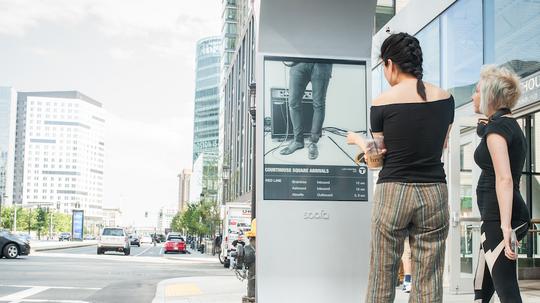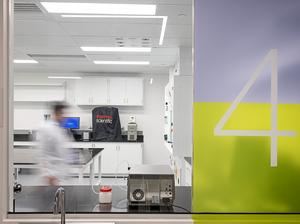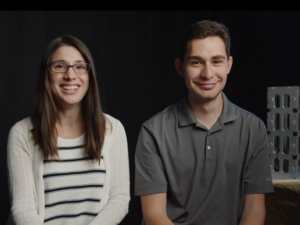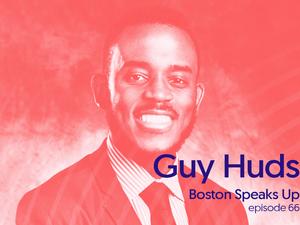
You may have seen Soofa's smart benches and signs in Kendall Square and Faneuil Hall, and they're certainly neat to look at. Plus, the signs can provide helpful information, such as MBTA arrival times, directions to nearby attractions and local event listings. The benches let you charge your smartphone. But is that all there is to Soofa?
While the Cambridge-based startup is putting a modern spin on city amenities, there's a lot more happening under the hood, with the goal of using sensor data collected by the benches and signs to help cities with urban planning. The MIT-born startup, which raised a $2.5 million seed round from local venture capital firms Underscore.VC, Accomplice and Pillar last year, also has big ideas of how these modern amenities can transform spaces.
"The whole idea was how can we create actual smart cities that are consumer-focused," CEO and co-founder Sandra Richter told BostInno in a recent interview.
Richter started working on the idea for Soofa with co-founders Jutta Friedrichs and Nan Zhao at the MIT Media Lab, trying to find a way to move the conversation about smart cities from a pure infrastructure focus to something that has a more direct impact on citizens.

With that, the founders started working on the Soofa Bench, a solar-powered bench that comes with USB charger stations. The Bench made its debut in June 2014 at the White House Maker Faire in Washington, D.C., but it can now be found in more than 75 cities.
The company's second product, the Soofa Sign, is a solar-powered, 7.5-foot tall structure that uses a 42-inch e-ink screen to display a number of things, which can include arrival times for local transit, advertisements and directions to nearby landmarks. The sign can also let people post their own messages and events. The Soofa Sign made a big splash in January when a series of them were installed in downtown Las Vegas during the Consumer Electronics Show happened. They can also be found in Atlanta and Boston.
"The idea was to have a sustainable, social internet of things device to embed in the community and have a mix of different messages," Richter said.
The bigger play for Soofa, however, is the data collected from the bench and sign. Beyond being able to track how many people use the bench to charge mobile devices, both the bench and the sign have the ability to measure how much cell phone noise is in proximity, which the company uses to indicate the level of activity in the area.
Richter said the sensor data, which does not collect personally identifiable information, is meant to help urban planners and other entities who want to take a more data-driven approach to understanding and developing spaces over time. Another way of putting it: it allows for planners to take an agile development approach to building cities.

For instance, the city of Las Cruces in New Mexico paid for seven Soofa units — for a total of $30,000, according to a GovTech story from last April — to measure downtown pedestrian activity for a few purposes: quantifying the potential number of users for a future public Wi-Fi network, tracking the attendance of events and collecting data for community planning and development decisions, according to a Soofa blog post from last year.
For the city of Las Cruces, the alternative would have been a nearly $400,000 investment to provide Wi-Fi alone, with no baseline understanding of to what extent it would be used. With Soofa, the city was able to collect data to extrapolate how many people are likely to use Wi-Fi and then enable hotspots within the company's devices for an additional cost.
"We felt the permanent infrastructure approach was cost prohibitive and had no data to support a return on investment," Andy Hume, Las Cruces' downtown planning and development coordinator, was quoted as saying last year. "During the time of the study, new Soofa technology came to light that is a much more modular approach, smaller in scope and will provide an incremental approach to provide service in the area."
Soofa has nearly 50 partners using the company' data product now, ranging from large cities and real estate developers to theme parks.
By turning public amenities into data-collecting apparatuses, Richter said, Soofa is "trying to get more quantitative data from the health of your public space in a non-invasive way.
Soofa isn't the only Boston-area startup in the smart city space. There's also CIVIQ Smartscapes, which makes large and rugged touchscreen-based signs that provide Wi-Fi and have a number of sensors for everything from lighting to air quality.
Correction: A previous version of this story incorrectly stated that the city of Las Cruces paid for seven Soofa units that cost $30,000 each. The total cost was actually $30,000.








